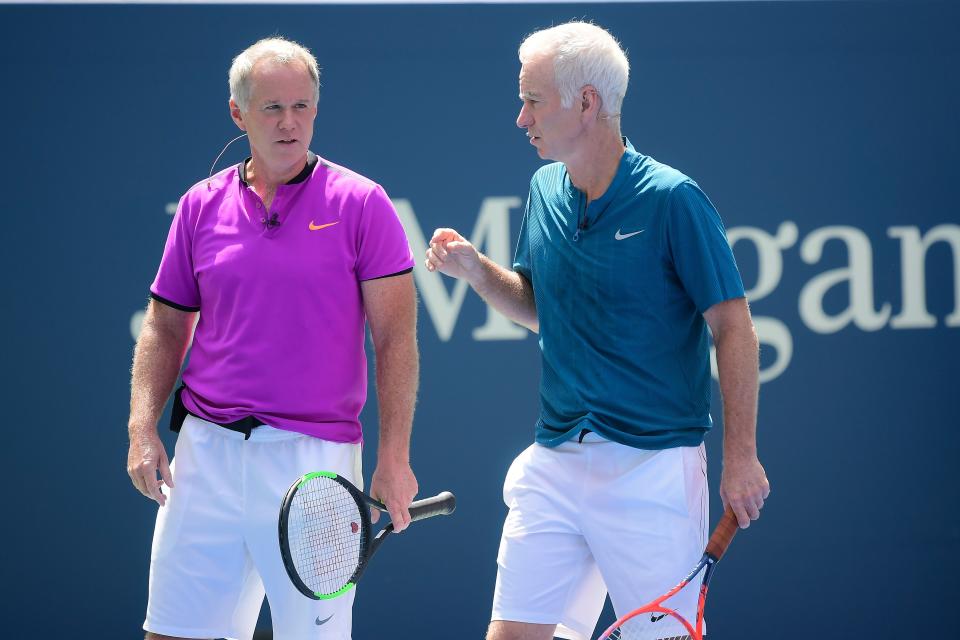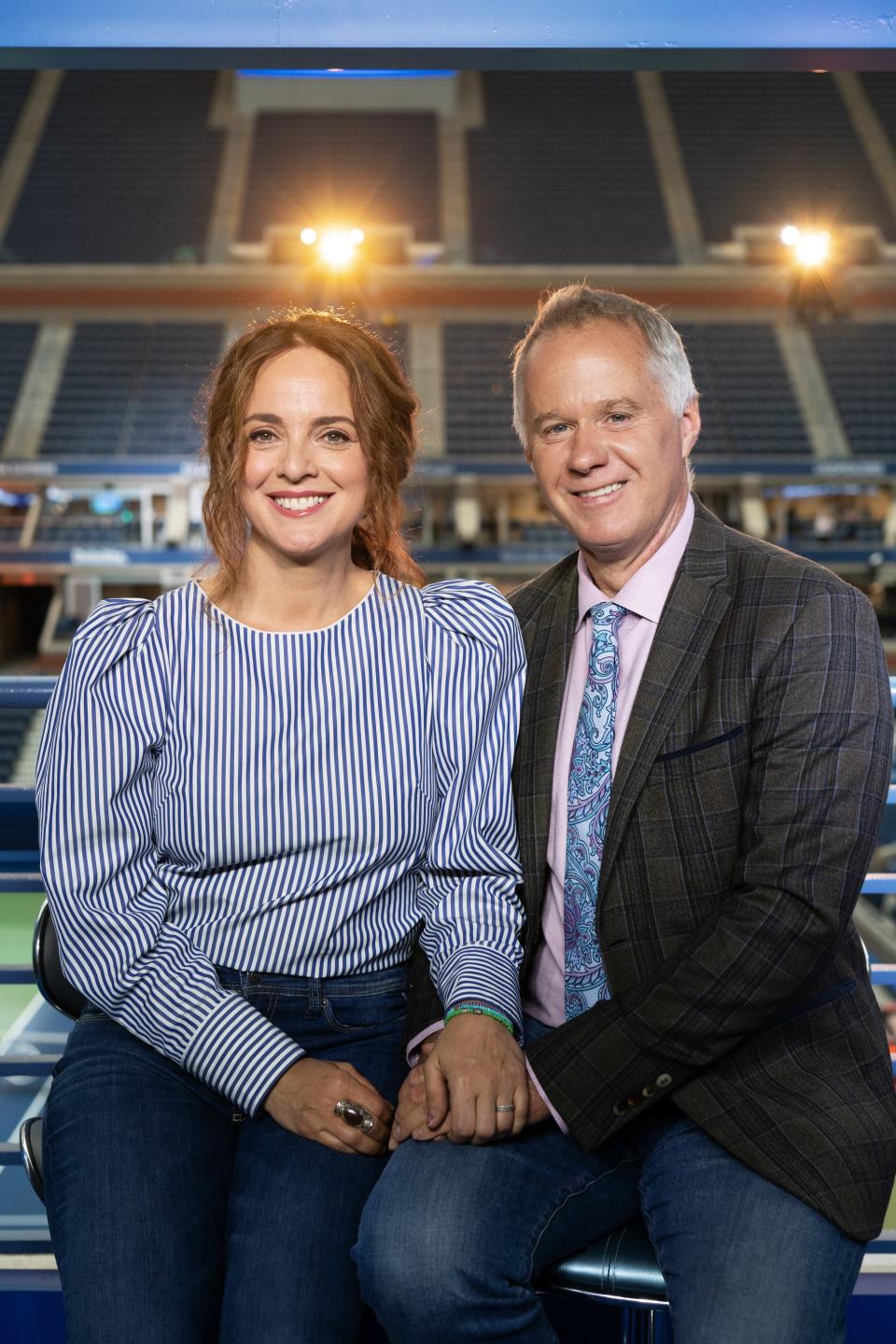Patrick McEnroe, the Mayor of the US Open, Predicts Today’s Women’s Final
Last night saw a relatively early finish to the action in Arthur Ashe Stadium out at the US Open: The men’s semifinals featured a pair of three-set triumphs, with Rafael Nadal taking down Italy’s Matteo Berrettini (he’ll take on Russia’s Daniil Medvedev in Sunday’s men’s final) to end the evening. I sat down with Patrick McEnroe—he called the match for ESPN along with his brother John—to get his take on today’s women’s final, in which Serena Williams will face off against Bianca Andreescu at 4 p.m. EST.
McEnroe is known as the Mayor of the US Open for a reason: He lives, breathes, sleeps, eats, and dreams tennis. A former touring pro and captain of the American Davis Cup team, when he’s not announcing tennis (next up: this year’s installment of the Laver Cup, starting on September 20), he’s helping run the John McEnroe Tennis Academy on Randall’s Island.
First, though, I had to ask him: Is there any part of his life that doesn't revolve around the sport he so obviously loves?
“Not really,” he says with a smile. “I mean, I had a reasonably successful playing career, and after I retired, I got the opportunity pretty early on to work for ESPN doing commentating. I’ve been working for them for more than 20 years, and that helped me get with the USTA and to the Davis Cup coaching job, which I did for more than 10 years.” It’s a theme that was established early on: “I’ve been very lucky—I love the game. I’ll still go to my club, the Bronxville Field Club, and hit a ball against the wall, just like how I started. There’s something about just you and the ball and the wall. I used to do the same thing at the Douglaston Club where I grew up. My mom used to call the neighbor down the street who lived right by the club, and she’d come over and tell me, ‘Patrick, it’s time to go home—it’s dinnertime.’ I’d get on my tricycle—I was three or four years old—and ride home for dinner. But I’m a lifer. I mean, other than my family and my kids and my wife and her career, it’s all tennis.”

Louis Armstrong Stadium Dedication Ceremony
Earlier during the Nadal match, I ran into McEnroe’s wife, Melissa Errico, briefly and asked her if she was, in fact, the world’s longest-suffering tennis widow. “Well, we have two dancers in the family, so in terms of mathematics, I’m up one and he’s down one. We have three kids: a 13-year-old”—who, it must be said, has been nationally ranked in junior tennis—“and 10-year-old twins, the latest McEnroe doubles team.” To call Errico a mere tennis widow, though, is a bit of an inside joke: She’s been acting and singing on Broadway and elsewhere since she was 22, recording and releasing music, guest-starring on television, and, most recently, writing for the New York Times. (For good measure, she recently helped save the life of a man who’d fallen onto the tracks in the New York subway. “I just got in there,” she says.)
“There was a phrase that was tossed around a while back, during a time when Patrick and I were spending a lot of time with Andre Agassi and Brooke Shields on their private plane: AMW, actress-model-whatever. I’ve been fighting that since the day I started working.”

Back in the ESPN booth, I ask McEnroe if he dreams about tennis. “I try not to do that,” he says. “Other than my loss to Jimmy Connors when I had a big lead here at the US Open. I still dream about that sometimes.” (Connors’s 1991 run for a late-career title—he faced McEnroe in the first round—was one of the sport’s most thrilling and madcap spectacles.)
Does the kind of specific notoriety that comes with being the Mayor of the Open make simple things like just getting around the USTA Billie Jean King National Tennis Center difficult?
“Everybody around here recognizes me, and it’s fun, but yeah, there are definitely times when I need a breather, so I sneak up here and relax for a bit. But there’s an energy around here, the kind of thing you can only get in New York. I have to pinch myself sometimes, even tonight: I’m here, with my brother, calling a match with one of the greatest players of all time in it. This is what you live for.”
As for his call on the women’s final match: “So far I’m looking good: I picked Serena from the start, and I picked Nadal from the start. But I think Andreescu is going to be the next great player—I think she’s going to be number one. She’s got all the weapons: speed, athleticism; she’s got touch. She’s a great big-match player who loves a big stage. I think she’s destined to win multiple majors and be number one, and she could absolutely win this one.”
But, he says, he's going to stick with his Serena pick. “I think the whole New York vibe is helping her—she’s gotten nervous, I believe, in these other big matches when she was in the final, and that’s always a danger because she wants it so badly. She wants to get number 24; she wants to do it as a mom. And sometimes I think that’s hurt her—she freezes a little bit. But I don’t think that’s going to happen. She’s fitter than she’s been; I think she’s moving better. And I think the energy and the whole vibe of the crowd is going to help her. Andreescu, though, is the one player who, even if Serena plays well, can still beat her. If Serena’s a little off, obviously a Halep or a Svitolina or a Kerber can beat her, but if Serena’s on, Andreescu can still play with her—she’s got that kind of firepower and a lot of weapons.“
Got it. And so, with the booth shutting down (John’s scurrying around behind us, baseball cap pulled down low on his head, furiously whipping up some kind of sandwich for the road), I ask McEnroe what he’s doing after the tournament—where he’s going to clear his head after a relentless three-week immersion in the sport.
“I’m not going anywhere,” he says. “I go right to our academy Monday morning. It’s the first day of our fall session, and I’ll be on the court with a bunch of kids from age 6 to 16 playing tennis. We’ve got 600 kids in the academy—some come four days a week, some come once a week. But you can find me there any time Monday through Friday. I’m there all day.”
Originally Appeared on Vogue

